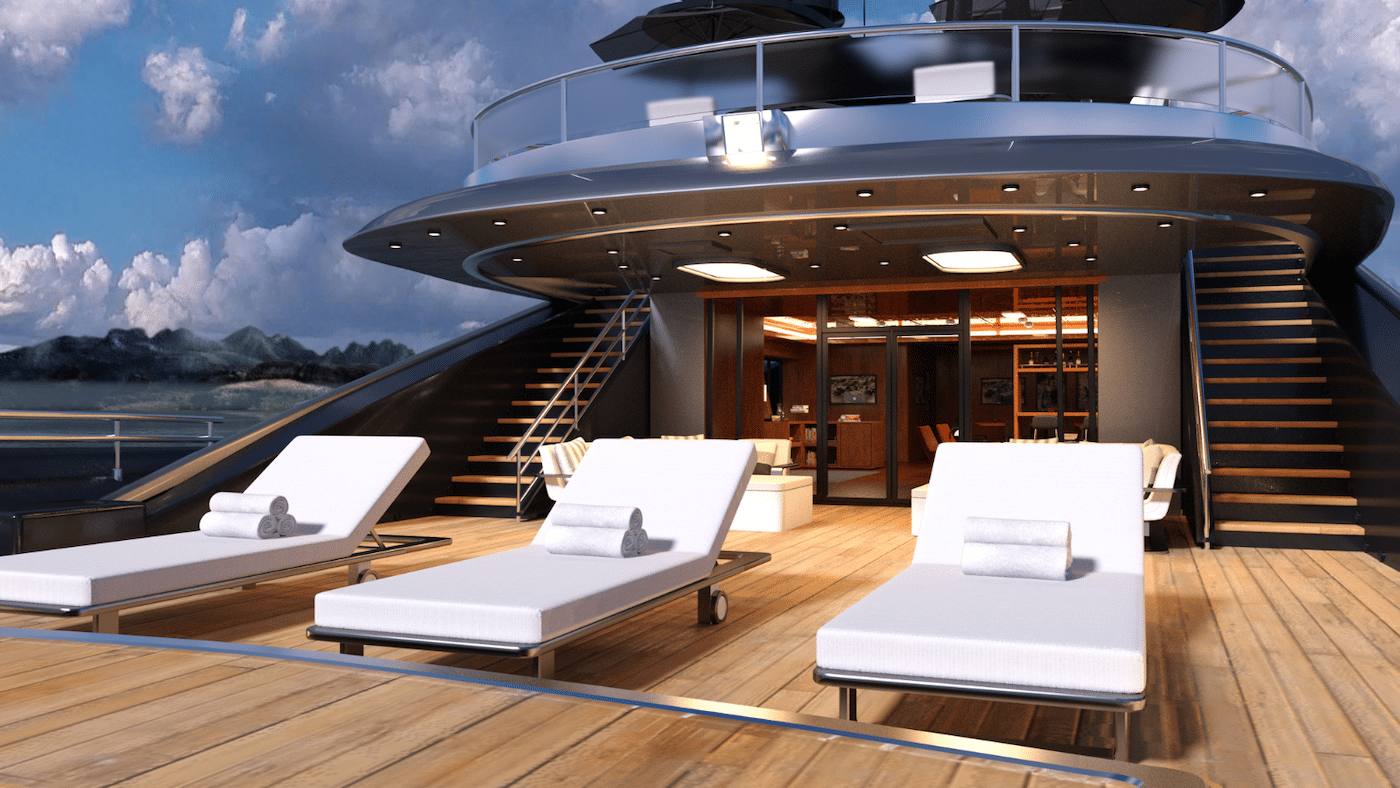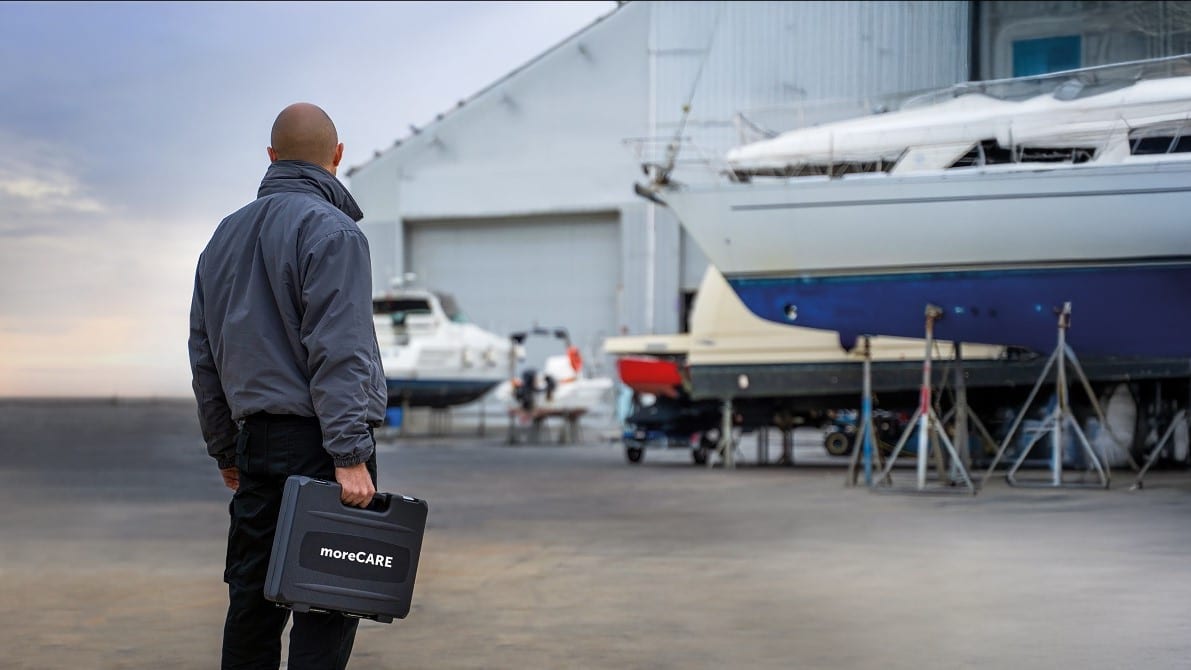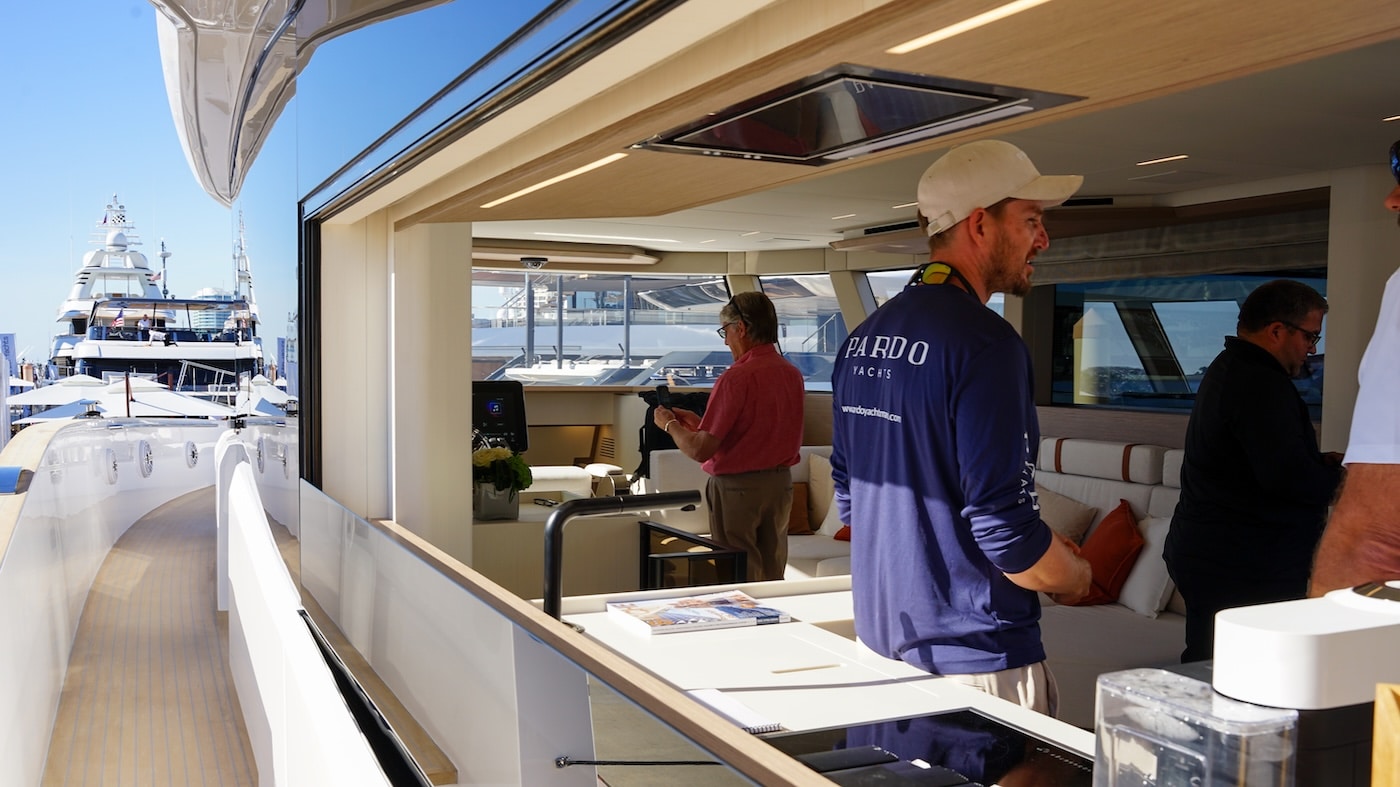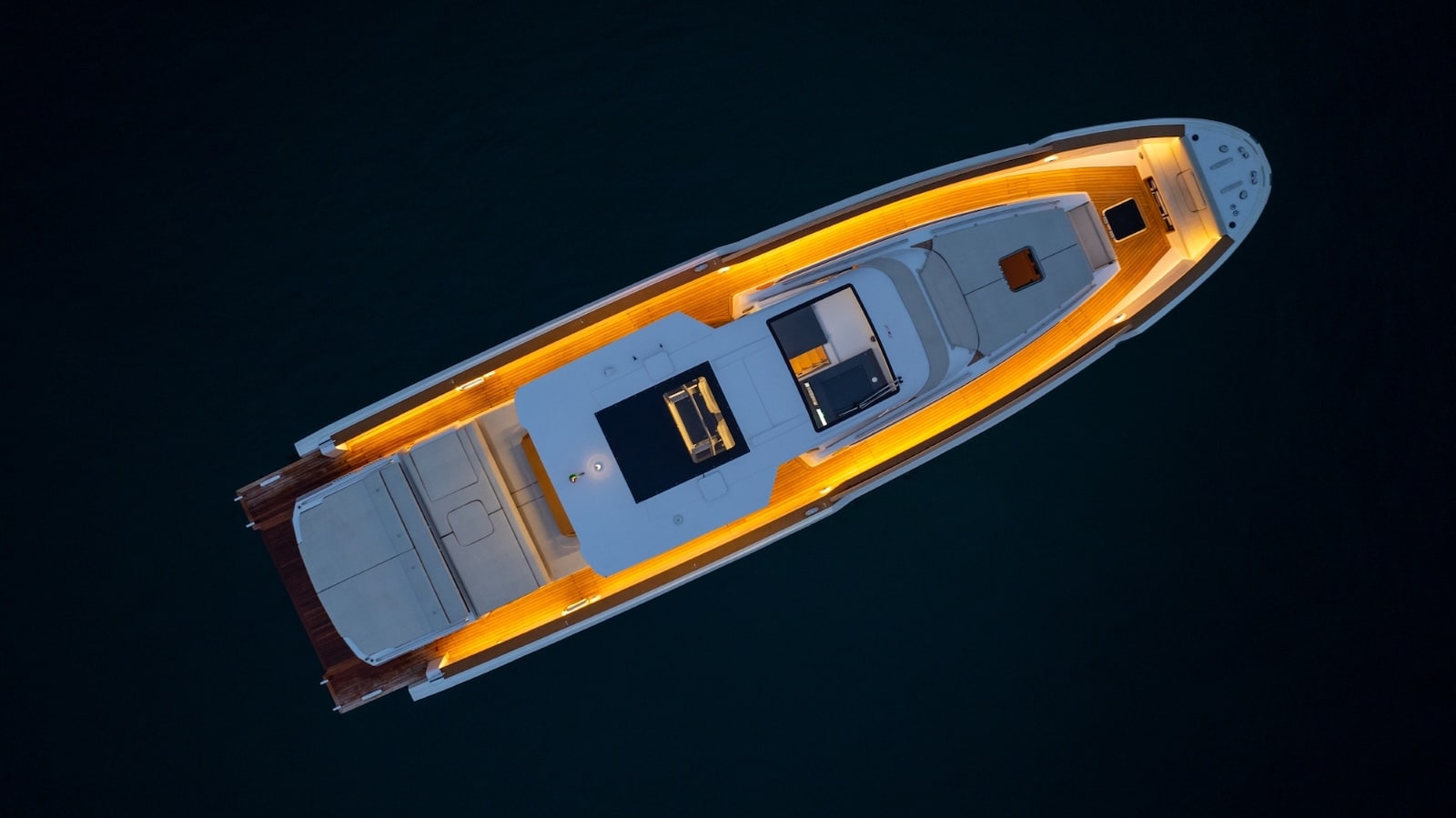In front of us, beyond the canal, lies the wreck of an old fishing boat, between Lymington, on the southwest coast of England and on the island of Wight, at a depth of ten meters. On board of the catamaran powered by motor, we are ready to test the new Simrad multifunction displays, the NSS Evo 3. The installed cartography is C-Map, but they also support Navionics.

Let us go straight to the approximate point, and in the meantime, we start testing the many features the display can handle simultaneously. Information management on the touch screen is simple and intuitive. On the same screen, superimposed on mapping in a very clear way, we see the AIS function, with the detection of the other navigation units, the radar, with a view of all the targets around us, and the sonar with a multiple possibility of bottom view. The sharpness of the images is impressive: they perfectly display chains, anchors, morphology of the backdrop and depth from many points of view, perfectly identifying the course to be followed to keep it safe.
The Forward function of the sonar is activated. In this way, on the screen, the vision of what we have in front of the boat’s the wreck appears at a distance of 20 meters, with a marked increase in safety margins.
Once the point is reached, in a few minutes the sonar “beats” the wreck target, defining its shape clearly.
When it is time to go back to Lymington, we test all the functions of Evo 3 interacting with each other. For example, activate the CALL function. Just touch an AIS target to have all the information about the drive, but also start an automatic radio call on a default channel.

Another interesting feature is to search and locate the units in navigation near ours through the list of MMSI numbers. For example, if you are looking for a friend’s boat, simply call up the MMSI list on the multifunction display, touch the number of the drive you are interested in, and the software searches and displays the exact position of the boat we were looking for.
A multitude of functions extending to the management of motors, grouping on a single touch screen the information and control possibilities that are normally obtained through several tools.
After finishing the motor catamaran tests, it was time to sail on board a 50-foot sailboat where Navico’s motherhouse wanted to install another B & G multifunction display specifically designed for sailboats. This is the Triton, which in many ways reproduces the same functions as Evo 3, sonar, radar, ais, wi-fi connectivity, enriched with information for sailors.

One of the most effective while navigating in the Solent currents was to visualize the direction and intensity of the current to which the hull was subjected. Information on the screen appeared very clearly integrated with those related to wind direction and intensity, tide intensity, and all the others we have seen on the Evo, the Forward function of the sonar, those Ais, radar, mapping. All summarized in a single screen or subdivided into multiple windows, up to six, on the same display.
Finally, we have tried at the sea the display that Lowrance, another brand of Navico, has designed to meet the needs of those who go fishing, the new HDS Carbon 16. Even in this, the functions that can be integrated on the same display are the same as we have seen on the multifunctional B & G and Simrad.

The new Carbon 16 has been specifically designed for fishermen. Then it has been equipped with a very powerful processor that allows users to switch from different applications or view them simultaneously quickly and easily. We have noticed a high definition of images, with wider viewing angles and greater accuracy in color. We also had the opportunity to simultaneously display images of two different sonar, stern and forward sources. A very important feature for fishermen, who can have a complete picture of what is happening underwater.
And last, we appreciated the size. The 16-inch screen is the largest ever produced by Lowrance and combined to high-definition images realizes one of the top products destined for fishing activities at sea.

























